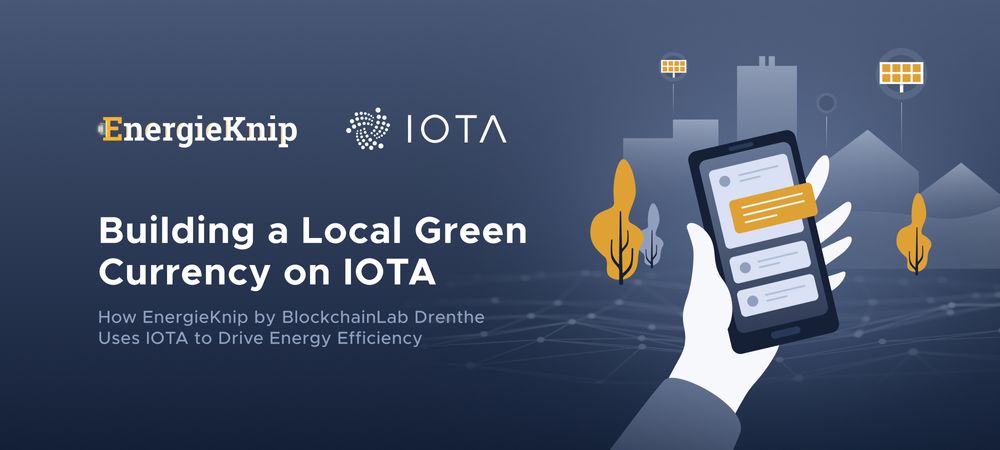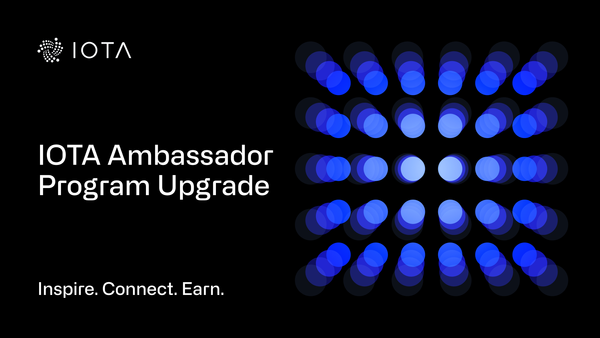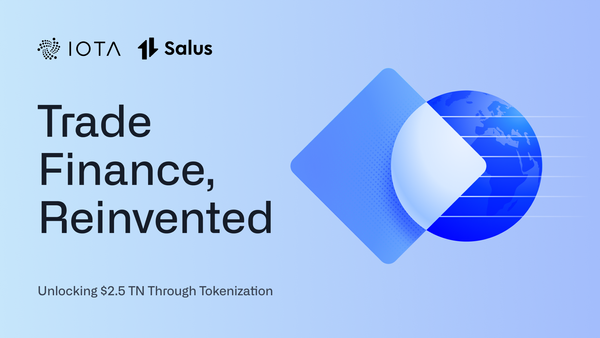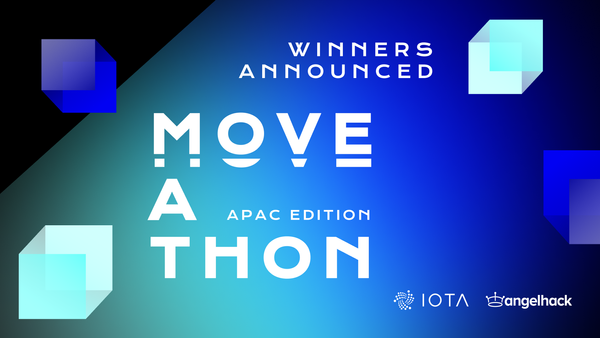Building a Local Green Currency on IOTA
How EnergieKnip Uses IOTA to Drive Energy Efficiency in 50,000 Homes
TL;DR:
Dutch-based BlockchainLab Drenthe has launched a large-scale real-world adoption of IOTA technology: EnergieKnip is a local currency used to transact data about energy-saving measures used in local homes and reward homeowners for their data.
Local token-based currencies built on blockchains are increasingly being touted as a viable solution to developing local economies. But could they also contribute to the fight against the climate crisis? A project that wants to find out is Energie Knip (or “eKNIP” and which translates as “energy wallet”), built using IOTA technology by BlockchainLab Drenthe for the municipality of Emmen in the Netherlands. Launched in January 2022 and distributed to 48,575 homes over four weeks, EnergieKnip is the first local token currency to be built using IOTA and is a vital example of the potential of IOTA.
Local token currencies are nothing new: the city of Bristol in the UK launched the Bristol Pound in 2012, and the past decade has seen several local authorities around the world use tokens as a form of currency with a specific use (and usually to incentivize their citizens to adopt greener behavior or support local businesses). Wherever they are and for whatever purpose they’re used, these currencies share certain attributes: for example, they are restricted to a specific geography or organization, they are not official government currency, and are targeted towards a particular group of people.
All of these attributes are present in EnergieKnip.
What is EnergieKnip?
EnergieKnip rewards citizens of Emmen, a municipality of about 100,000 citizens in the northeast of the Netherlands, with digital tokens for anonymously sharing data about energy-saving measures used at home. The tokens can be used to buy energy-saving devices in local stores. On a macro level, this is part of a wider drive by the Netherlands government to reduce energy expenditure to reach the UN’s global climate goals.
Its goals are to educate citizens about energy issues, encourage them to install devices in their homes to reduce the overall national energy consumption, increase demand for energy-saving devices, and collect anonymized information about energy use in the area.
This last point is important: because of GDPR, data collecting has to be anonymous. It should not be possible to identify a house within the system, and the local authorities should only have insights on an aggregate level.
Why IOTA?
Like any blockchain or DLT, IOTA is useful as a foundation for a local token currency because it reduces the administrative cost of organizing a local coin, facilitates transactions, and, thanks to the transparent and immutable nature of transactions made on a DLT, prevents fraud.
The innovation of smart contracts opens up new functionalities, too: for example, an automatic expiry date can be built into a coin, or coins can be earmarked for specific usages - for example, five coins from your digital wallet may be used for local public transport before six pm between Monday and Friday.
The IOTA Foundation is particularly pleased that its open-source technology has been chosen for EnergieKnip. Several touchpoints make IOTA tech and the IOTA token the perfect match for this project. Firstly, its lack of transaction fees makes it a low-cost network to operate; if sustainable solutions are to be found for the climate crisis, they need to save money as well as energy. Also, high-transaction speeds make it an easy network to operate.
Above all, given that this project is about saving energy and making better energy decisions, it is fitting that EnergieKnip is powered by IOTA’s energy-efficient distributed ledger technology (IOTA’s low energy consumption compares favorably to Bitcoin and Ethereum).
“We are doing a sustainability project with blockchain. Using a protocol with an enormous energy footprint would be very counterproductive (and unethical). The energy efficiency, speed, and the fact that it is feeless made IOTA easily the weapon of choice to tackle this challenge.” says Adri Wischmann co-founder of BlockchainLab Drenthe. “This is a great chance to show people with all kinds of negative presumptions about blockchain (large energy footprint, slow, expensive) that there are very good alternatives to work with.”
How it works
The municipality is divided into 28 neighborhoods, and each neighborhood is assigned a string of seeds. These seeds’ QR codes cannot be distinguished from each other; it isn’t possible to tell the difference between a seed from one neighborhood and a seed in another neighborhood (unless you know the mother key and algorithm that generated the list of seeds could you reconstruct where they belong). Each seed is assigned to a home in the form of a digital wallet. Each home has an ID which is stored on the Tangle.
Residents answer questions about energy-saving measures and behavior in their homes (how many solar panels are on the roof, for example, or whether the windows are double-glazed, or whether they switch off their television at night or leave it on standby) in the accompanying app (and by doing so, the information is stored on the Tangle). For every piece of data uploaded onto the app and received by the municipality of Emmen, the EnergieKnip coins or points are sent to the wallet in reward. These coins are then spent by the residents in local retailers for new energy-saving devices.
Coins can be spent at local retailers on new energy-saving devices, like LED lighting, radiator foil, or thermostats, for example.

Anonymity is guaranteed by the random generation of seeds/wallets for every home in Emmen, as well as the fact that the app doesn’t ask for personal information like name or address.
Outside this circular economy, the retailers who receive EnergieKnipe tokens can exchange them with the local authorities for euros. So everybody wins. The municipality gets valuable data, the residents get coins and goods, the retailers get revenue, and the environment profits.
To find out more about EnergieKnip, visit energieknip.nl/en. For more information on BlockchainLab Drenthe, visit www.bcld.nl/en.
This project is commissioned by the municipality of Emmen, The Netherlands, and co-financed by Interreg project BLING (Blockchain in Government) https://northsearegion.eu/bling.
If you are interested in discussing with the IOTA Foundation ways to build on IOTA technology, reach out to us via the Contact page of our website at www.iota.org/connect/contact.
Follow us on our official channels and get the latest news!
IOTA: Discord | Twitter | LinkedIn | Instagram | YouTube




